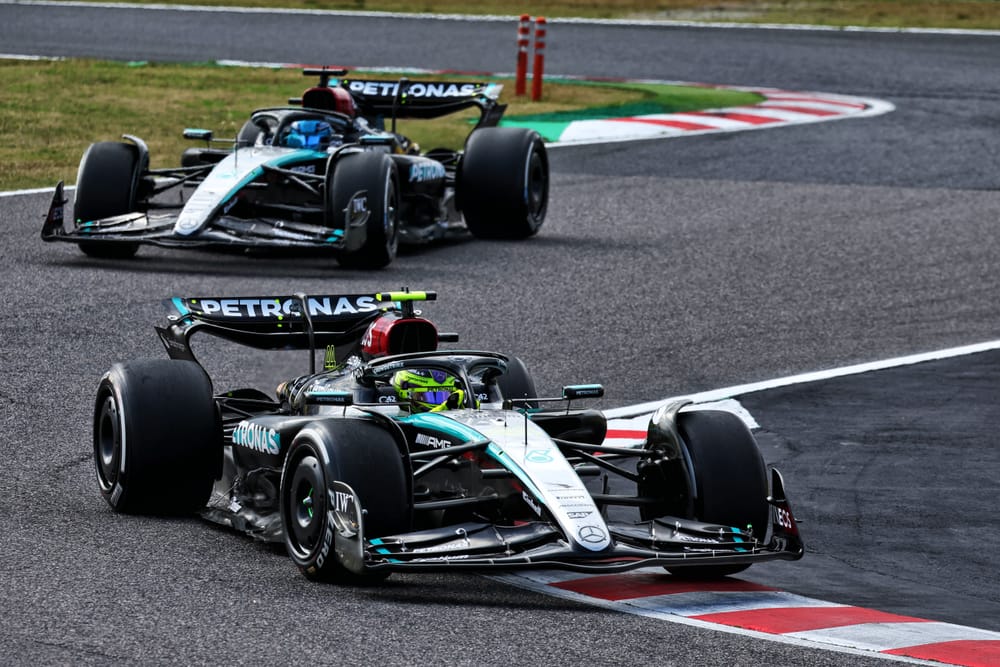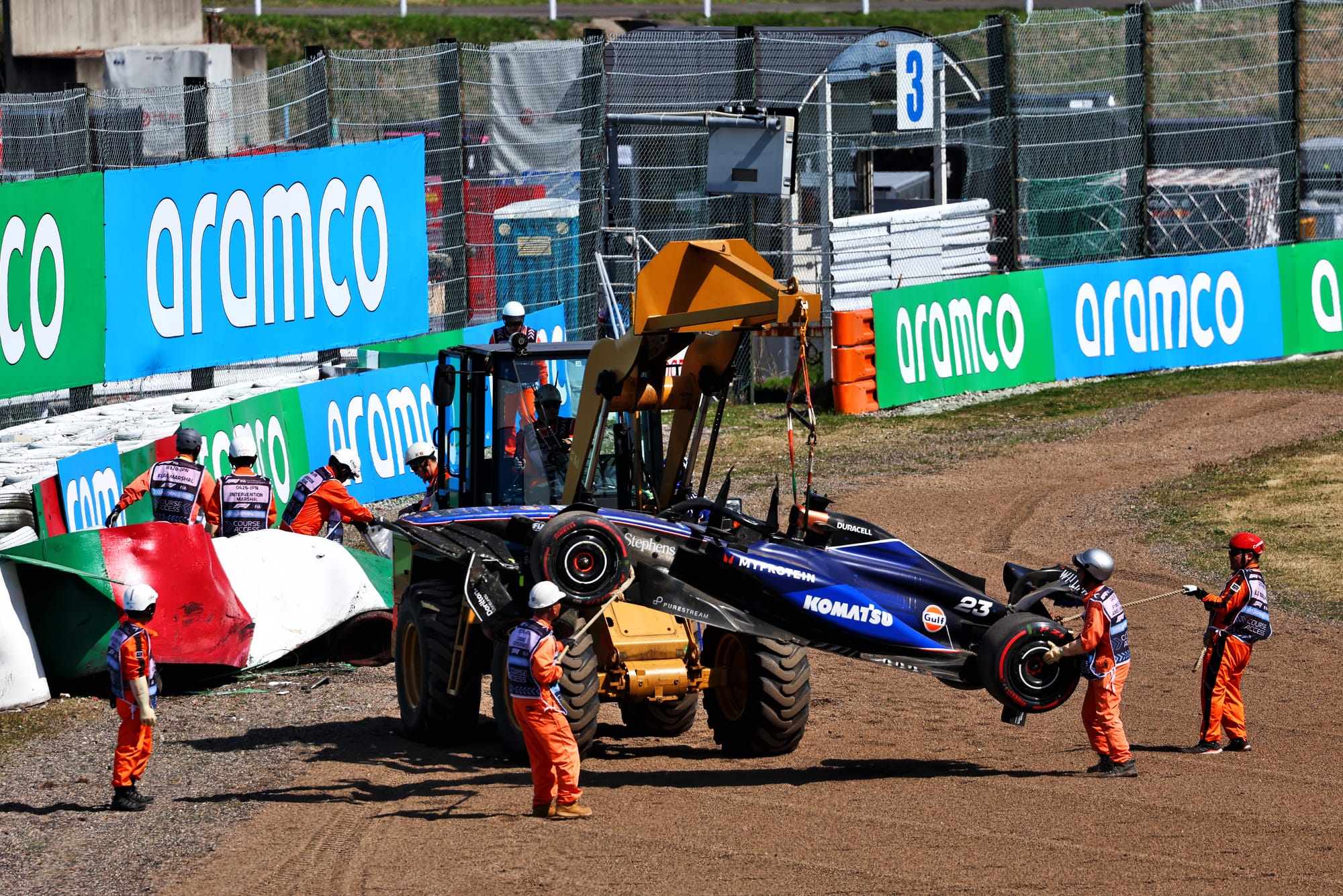Up Next

Last time we were here it wasn’t blossom season in Japan; this time it was. But regardless of seasons this is the era of Max Verstappen. His winning margin over the nearest non-Red Bull around Suzuka was 20s, just as it had been six months ago. The only significant difference was that this time there was another Red Bull in between Verstappen and the team’s closest pursuer, Ferrari’s Carlos Sainz.
Actually the race between Sergio Perez, Lando Norris’s McLaren and the two Ferraris was engrossing, utilising different strategies and tyre choices. But it was all happening increasingly distant in Verstappen’s mirrors.
Running at the front unchallenged only increased his advantage, allowing his tyre management skills to be even more heavily rewarded at a track which imposes such heavy tyre degradation, especially on a hot day such as this. It allowed Verstappen to run the first stint of the standard two-stopping race longer than anyone else, which gave him an increased tyre advantage in the remaining two stints. The longer the race went on, the more the gap grew.
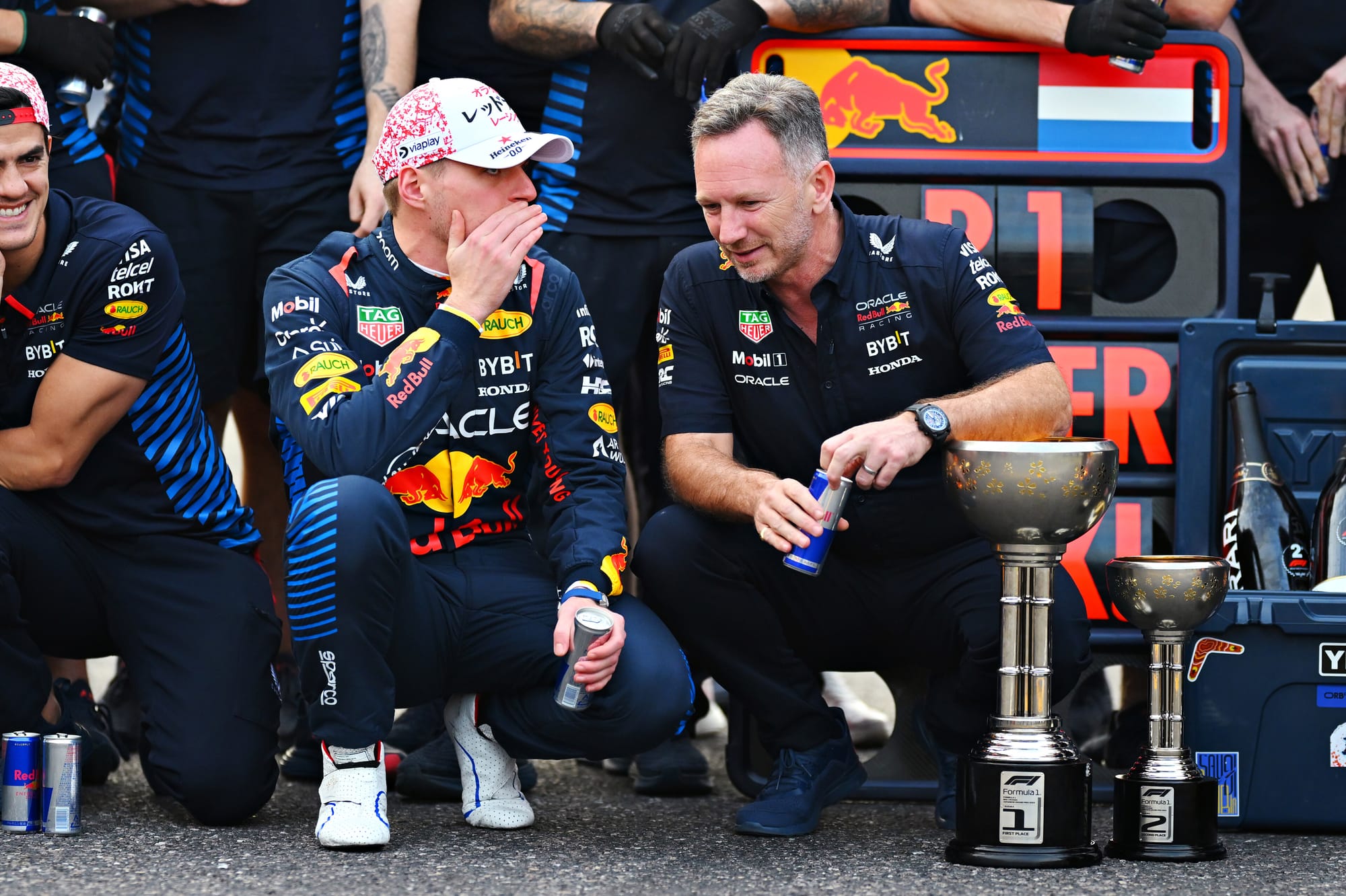
Christian Horner has run out of superlatives, but it’s now spread to the rival teams.
“He changed trainer over the winter. He’s fit and lean and the car is in a great window,” said Horner. “You can hear how much spare capacity he has in the car. He wants to know not just who’s behind him, but who is behind them as well and what times are they doing.
“He’s become very astute at managing the tyre. The way he managed to extend the tyre life is very impressive. We saw that in the first stint, especially.”
Toto Wolff, after watching his Mercedes pair finish seventh (George Russell) and ninth (Lewis Hamilton), could only look on in wonder: “No one is going to catch Max this year. His driving and the car are just spectacular and to see the way he manages the tyres... This season is about best of the rest, same as it was last year.”
'Best of the rest'
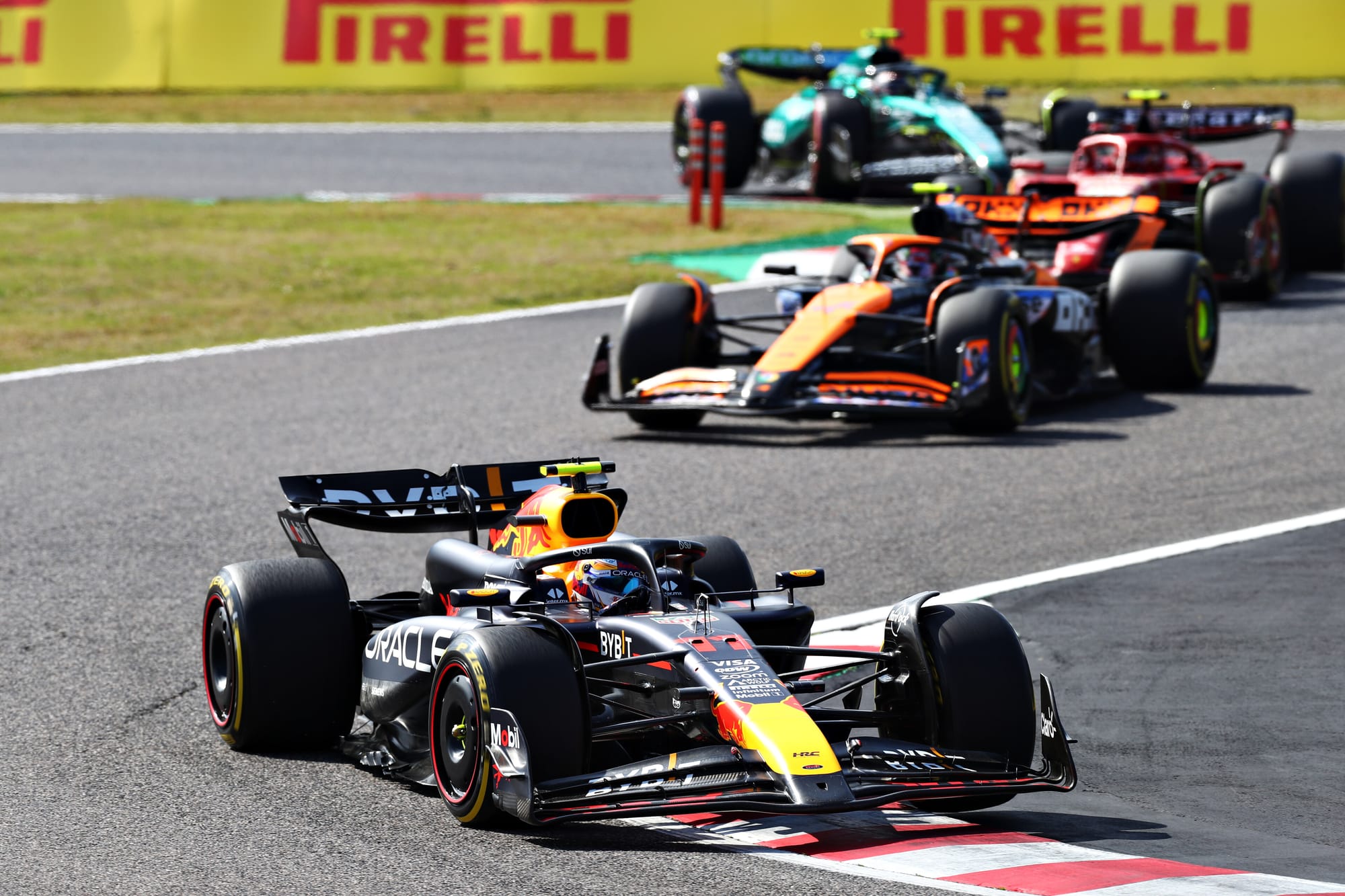
A race without Verstappen in it here would have been quite different to how that situation had panned out in Melbourne. This one had blue, orange and red phases and was a close call.
Without challenging Verstappen, Perez covered off Norris, Sainz and the fast-starting soft-tyred Fernando Alonso into the first turn and up through the Esses. In fact he did it twice, repeating the feat after the restart from the red flag for the Daniel Ricciardo/Alex Albon collision first time around.
The stoppage gave everyone the opportunity to change their starting tyres if they wished. Among the original top 10 starters, only Mercedes and RB’s Yuki Tsunoda chose to change compounds.
Mercedes decided to switch from the conventional starting choice of medium to hard, with the intention of one-stopping. From seventh and ninth on the grid, it was a case of ‘why not’? Tsunoda swapped his mediums for a set of softs. So the medium-tyred Charles Leclerc out-accelerated Hamilton for seventh on the restart and the soft-tyred Tsunoda did the same to Russell for ninth.
The break had also allowed front wing angles to be tweaked and the Red Bull drivers were among those who did so. They took some wing angle out, having done those few corners on a track quite different to the cooler conditions of Friday and Saturday. Verstappen had been reluctant, as his in-race conversation with race engineer Gianpiero Lambiase attested.
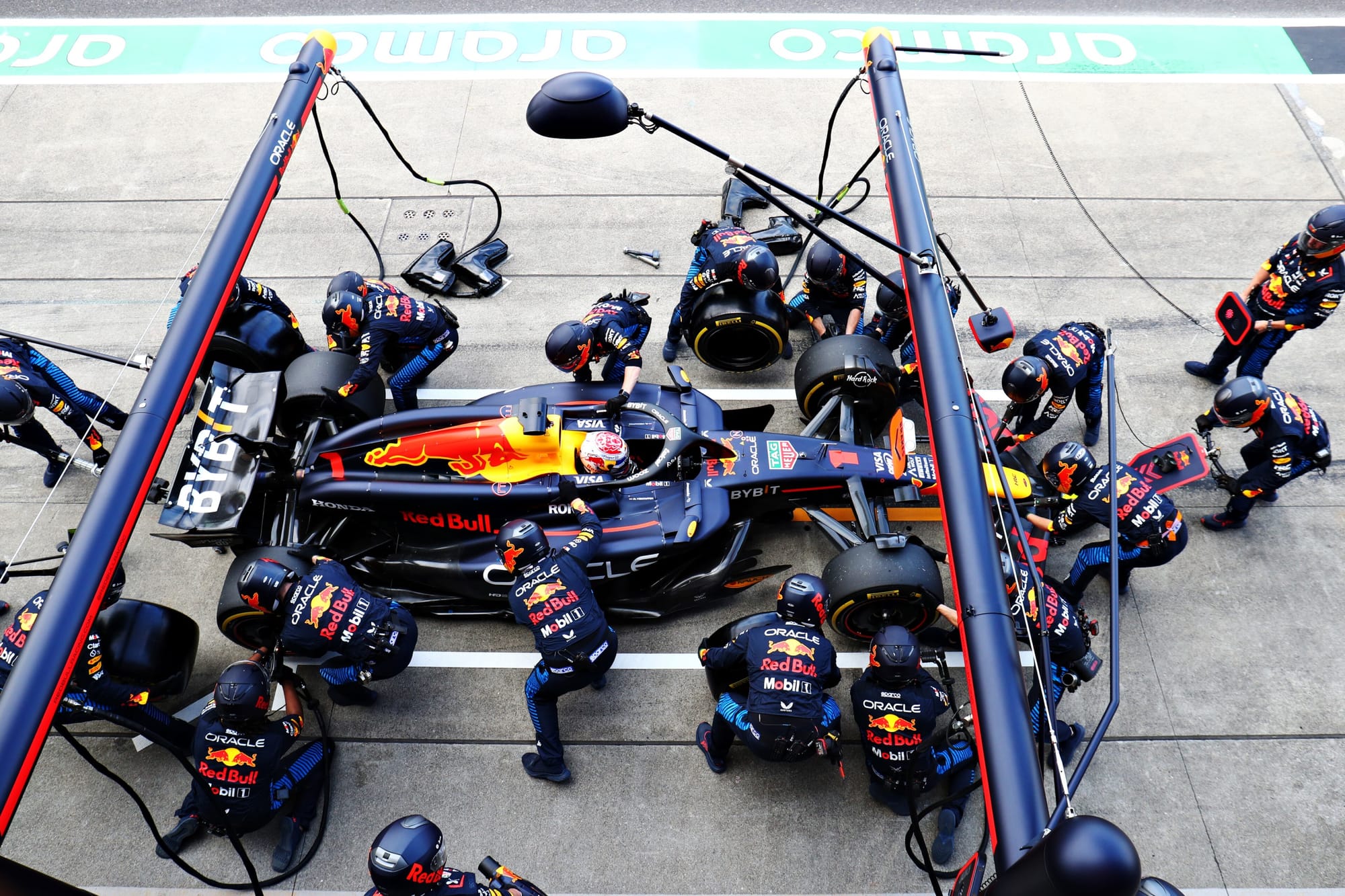
He could probably have dominated with any wing level, but this is a track which pivots quite delicately between front- and rear-limited. Not in terms of wear, but temperatures and the heavy performance deterioration which follows. The wing level just determines how you drive it, how much you have to protect which end.
With everyone on the same age of tyre, passing is exceptionally difficult here. It only starts to happen after the pitstops because the degradation is so high that the new-tyred cars are massively faster than the old-tyred ones.
So as everyone settled into a tyre-preserving pace, Perez was actually being protected by Norris behind him. Because the McLaren was keeping the faster Ferrari of Sainz off his back and Carlos couldn’t pass.
The Ferrari was definitely the second-fastest car here, so how come it had qualified behind Norris?
Well, firstly, Norris had delivered a super Q3 lap. And secondly - let Andrea Stella explain: “On a new soft tyre we could mitigate some of our deficits like in the low-speed corners. With new soft rubber the corner becomes quite a bit shorter and that minimises the disadvantage. So [in qualifying] we didn’t lose much time at the hairpin, for example.
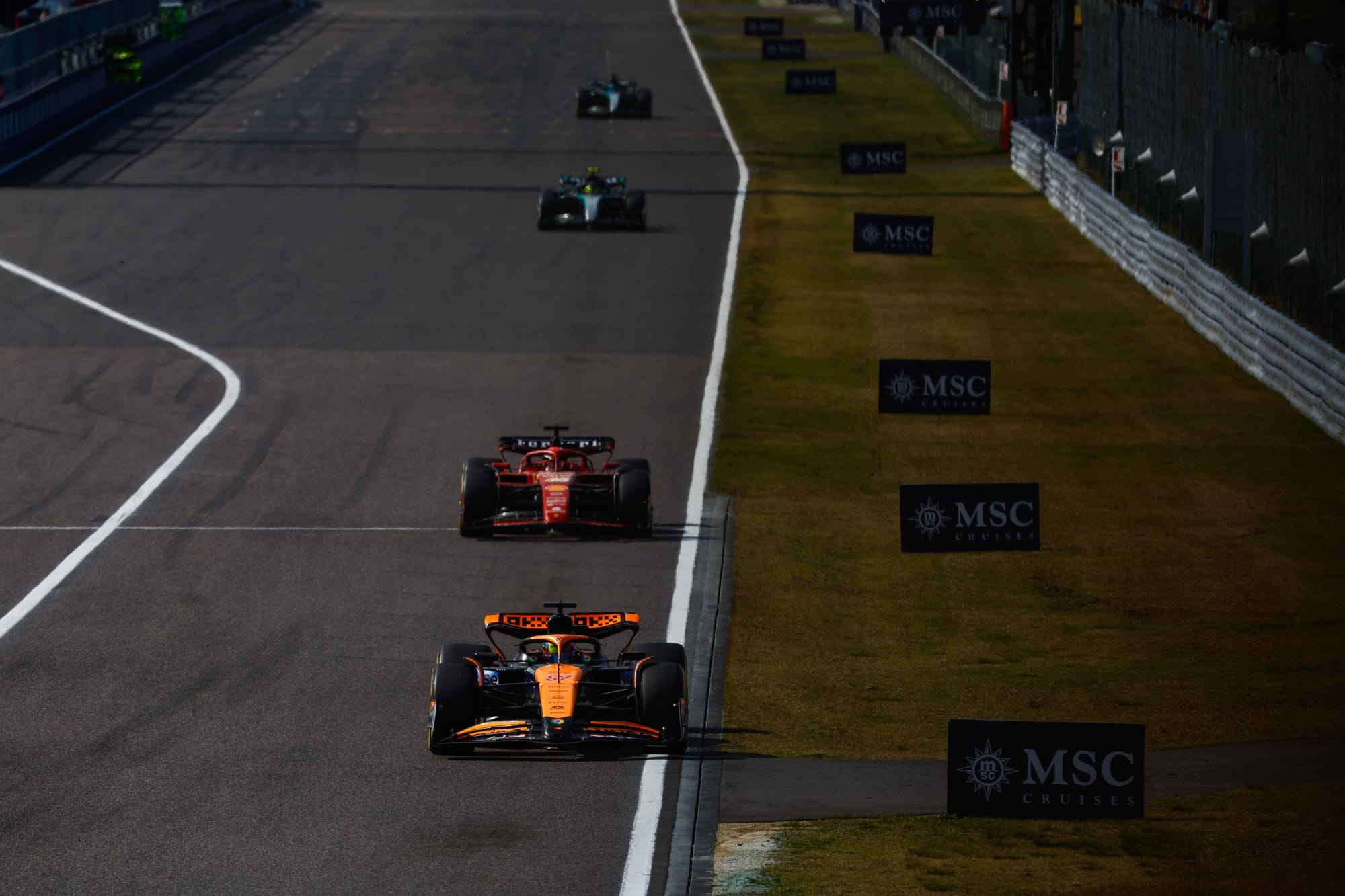
"But on harder compounds and losing a tenth every lap in degradation, it exposes us a bit. So we suffered more than [Ferrari].”
So as the first pitstop window opened, with Perez not quite within his undercut reach, Norris was under obvious undercut threat from Sainz just behind. McLaren was effectively forced to cover that off, bringing Norris in at the end of the 11th lap.
Sainz was immediately able to begin closing up on Perez, forcing Red Bull to bring him in at the end of lap 15, with Sainz following suit. They left in the same order but such is the high degradation rate that Norris’s much earlier stop had undercut him ahead of them both. There would soon enough be a price to pay.
Meanwhile, running increasingly far behind the closely-spaced Alonso-Piastri-Leclerc, Mercedes was trying to one-stop, so had artificially limited its pace.
Russell had repassed Tsunoda easily enough and then felt that Hamilton was running slower even than necessary. Hamilton had no wish to speed up - and so allowed Russell by.
The rejoining Norris, Perez and Sainz all found their way by them easily enough - Perez choosing to do it to each Mercedes in turn at 130R, illustrating the point of how easily a new-tyred car could actually overtake an old-tyred one on-track. Cars were even overtaking through the Esses at the top of the hill. It looked great but didn’t mean much.
It wasn’t long before Hamilton was reporting his right-front was ‘almost dead’. There were still over 30 laps to go. Russell wasn’t long in reporting the same. Clearly the one-stop was not going to work, so they’d artificially limited their pace for no strategic reward.
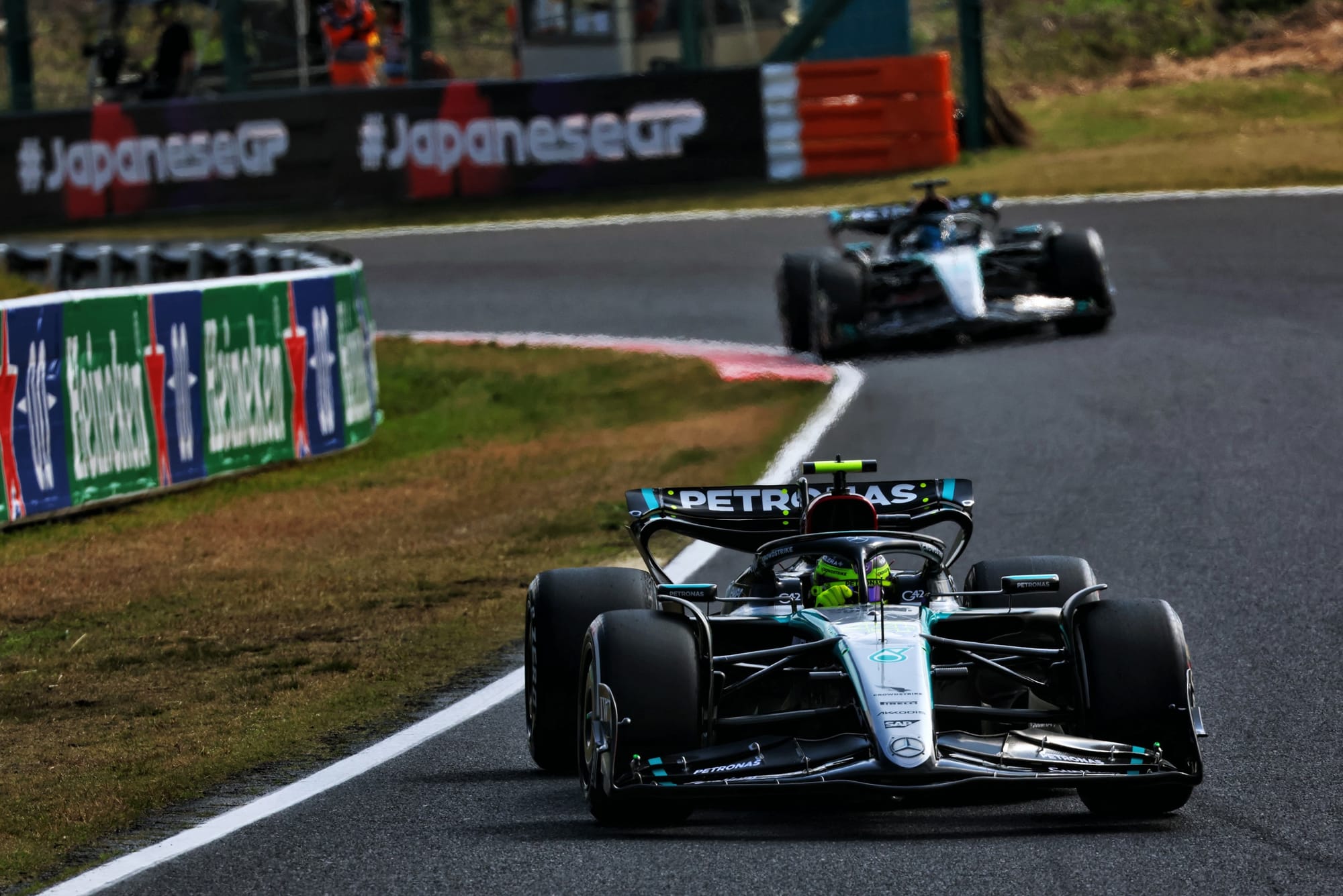
But that was in stark contrast to Leclerc. Despite starting on the medium (Ferrari, like Red Bull, had saved two new sets), with no undercut threat from behind thanks to his poor starting position, he was able to run twice as long as the cat-and-mouse Alonso/Piastri ahead of him - and a few laps longer even than the Mercedes on their hards.
He was going to one-stop. It was a terrific performance and underlined again that the Ferrari was probably the second-fastest car in the place.
Norris’ early stop, which had boosted his position, left him powerless to hold off the newer-tyred Perez. Leclerc made his first stop on the same lap as Norris made his second.
Once everyone’s strategies had weaved in and out of each other and everyone - whether two-stoppers or one - had made their final stops, it was lap 36.
Somewhere in the far distance, Verstappen was on his way to his third victory in four. Perez was around 4s ahead of Leclerc and Norris, who were being caught fast by Sainz on tyres 10 laps newer (and therefore around 1s per lap faster). He breezed past Norris without any resistance into Turn 1 under DRS and from there was allowed past Leclerc under team instruction, so that he could continue his chase of Perez.
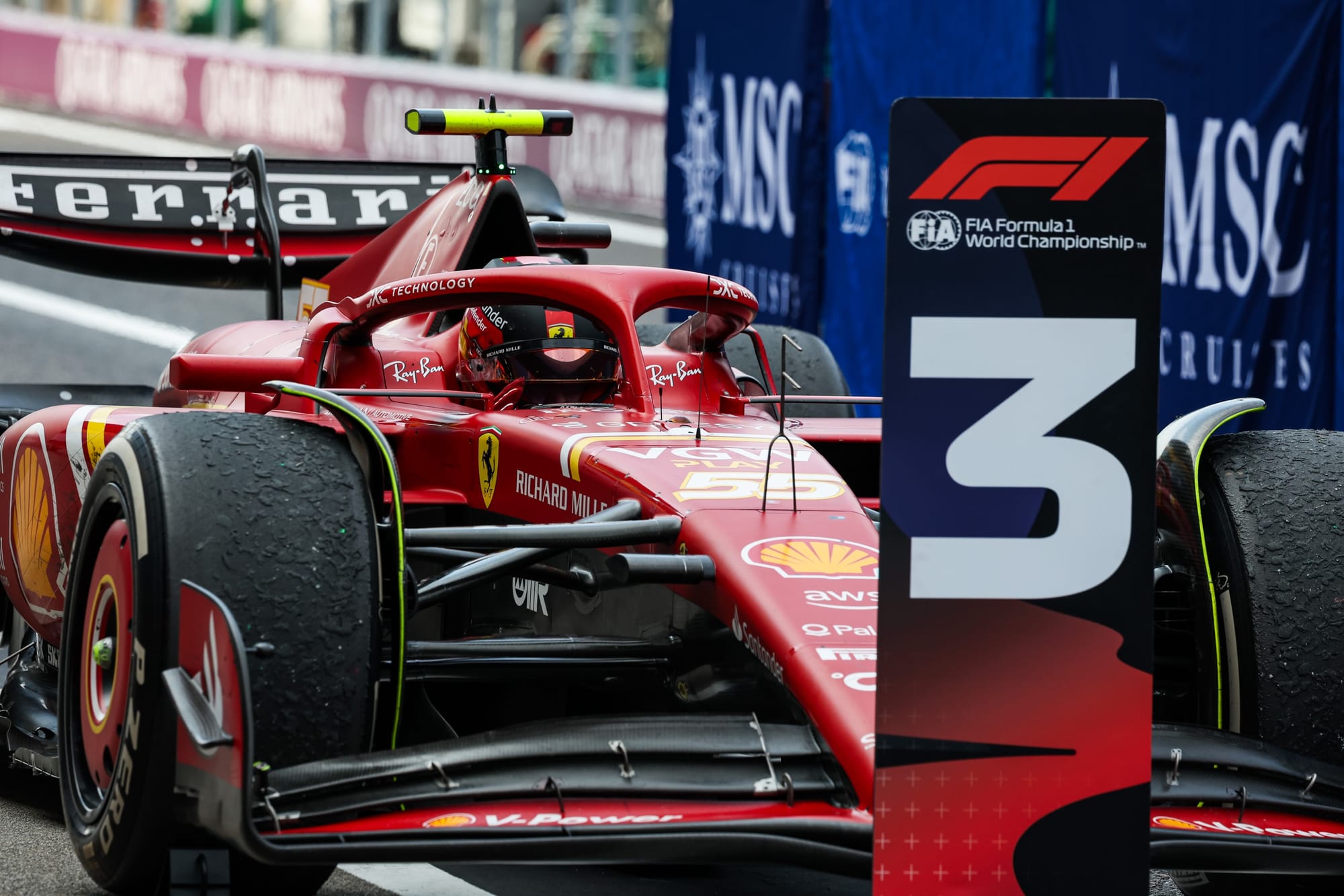
Had he been able to pass Norris at the start, Sainz might have been able to put real pressure on the second Red Bull but, although he was lapping quicker, he was too far back and with not enough laps left.
It was an honourable third, the two-stop having proved superior to Leclerc’s one-stop, netting Ferrari a 3-4. But even a one-stopping Leclerc was able to beat two-stopping Norris, mainly on account of how early Sainz had forced the McLaren to make its first stop.
Alonso drove a typically feisty and tactical race, easing off to keep Piastri in his DRS so as to keep the advancing Russell (both Mercedes having converted to a two-stop) behind.
Things got mighty close between the Mercedes and second McLaren, Piastri forced to take the escape area of the chicane at one point to avoid contact. But going into the last lap Piastri locked up into there, giving Russell the momentum to pass down the straight for seventh, behind Alonso.
Hamilton was close behind this group and not under threat from 10th-placed Yuki Tsunoda - hanging on to a point, much to the delight of the local crowd.


